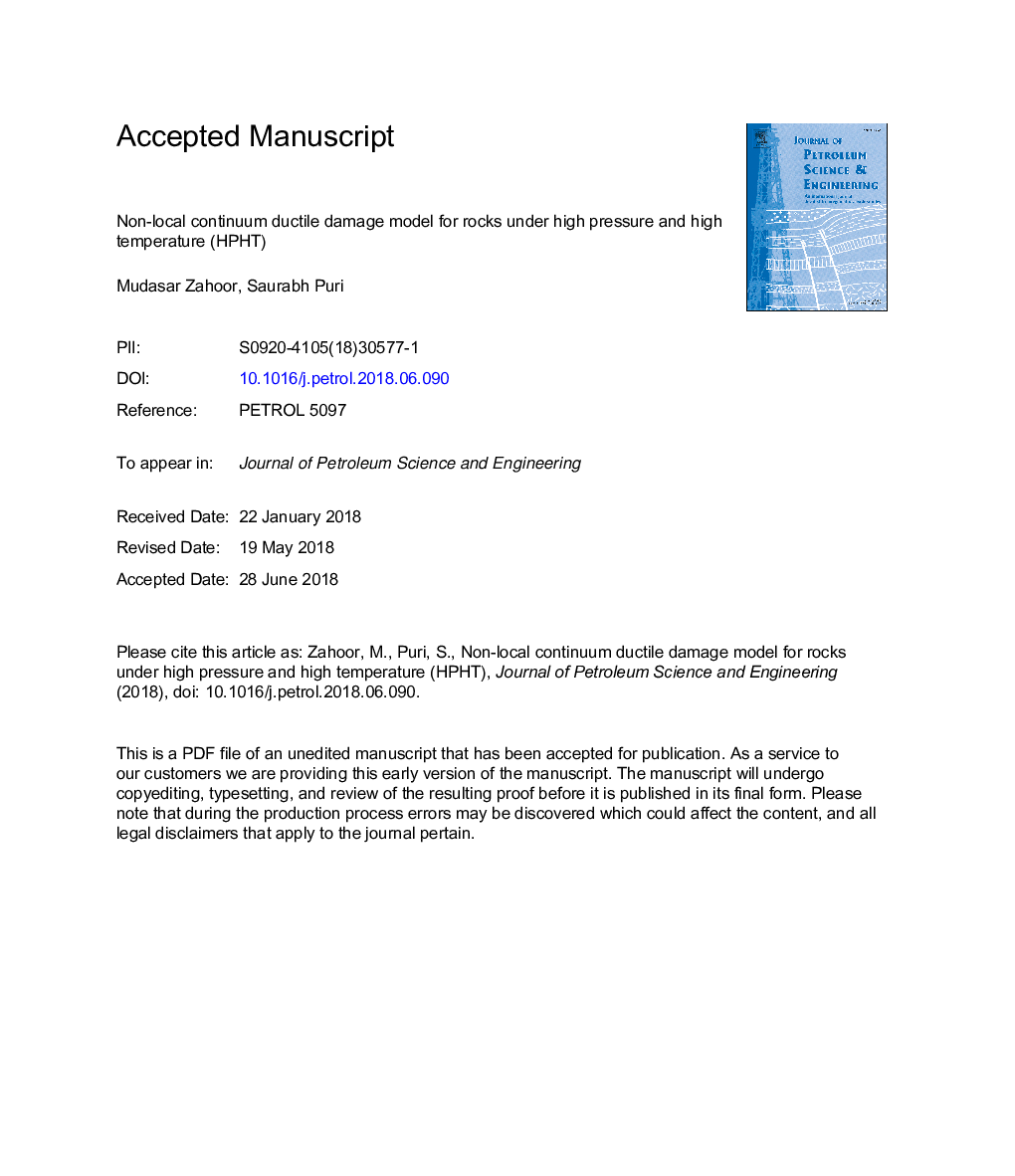| Article ID | Journal | Published Year | Pages | File Type |
|---|---|---|---|---|
| 8124491 | Journal of Petroleum Science and Engineering | 2018 | 29 Pages |
Abstract
The primary phenomenon responsible for rock failure called damage is described as the nucleation and evolution of voids in the rock matrix. The damage of rocks especially under the extreme conditions of High Pressure and High Temperature (HPHT) is studied. Rocks demonstrate ductile behavior in HPHT conditions, which is attributed to high confining pressure due to which fragments are held together and a continuum flow is possible. A new 3D non-local macroscopic continuum ductile-damage model is developed for realistic modeling of behavior of rocks under HPHT conditions. The model uses a damage variable, which is a volumetric quantity, called the void-volume fraction. It is assumed that damage is initiated and then driven by the onset of plasticity in a coupled non-local system. The numerical model is applied to a uniaxial compression and the dynamic indentation problems respectively. The dynamic indentation problem is of particular interest to rock drilling at ultra deep depths. Numerically, indentation introduces high stress concentrations and strain localizations, which are generally very hard to handle, owing to issues like loss of hyperbolicity, material length scale and shear deformation bands, using classical methods. The selected problems are solved by local and non-local approaches respectively. The uniaxial compression problem demonstrates the large difference in failure strains of rocks under normal pressure and temperature conditions and HPHT conditions. Results obtained from the dynamic indentation problem show that the damage is incurred in a rock body under the action of an indentor in the form of damage-zones of varying degrees of damage. The results also indicate the importance of non-locality that provides stability and convergence to the numerical solution.
Related Topics
Physical Sciences and Engineering
Earth and Planetary Sciences
Economic Geology
Authors
Mudasar Zahoor, Saurabh Puri,
